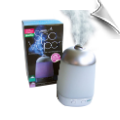
Basil Essential Oil, ct. methyl chavicol | Alabama Essential Oils
Decongestant, Lungs, Prostate, etc.
 |
 |
| Click to enlarge image(s) |
Name Basil Essential Oil, ct. methyl chavicol, USA
Category Essential Oils
Species Ocimum basilicum
Part Leaf
Method Steam Distillation
Class Phenolic Ether
Country USA
Code OciBas2
SHOP OUR NEW PAGE: Basil Essential Oil ct. methyl chavicol – Alabama Essential Oils – Alabama Essential Oil Company (fragranceandherbalist.com)
Basil Essential Oil ct. methyl chavicol USA.












